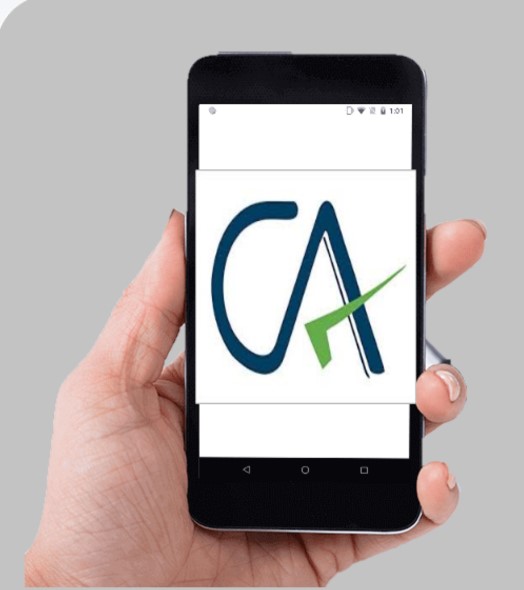Introduction
Short-term borrowings are a crucial component of a company’s balance sheet, representing obligations that are due within a year. These borrowings typically include bank overdrafts, short-term loans, and other forms of credit. Ensuring the accuracy and proper disclosure of short-term borrowings is vital for the fair presentation of financial statements. This guide outlines the procedures, queries, and common issues related to auditing short-term borrowings in the context of Indian companies under Indian laws.
Legal Framework and Regulatory Requirements
- Companies Act, 2013
- Section 129: Mandates that companies prepare financial statements in compliance with the accounting standards prescribed by the Act. It ensures that the financial statements give a true and fair view of the state of affairs of the company.
- Schedule III: Provides a detailed format for the presentation of financial statements, including the classification and disclosure of short-term borrowings under current liabilities. Companies are required to provide details such as the nature of borrowings, terms of repayment, interest rates, and securities offered.
- Section 179: Details the powers of the Board, including the power to borrow money and invest the funds of the company. Board resolutions are required for all significant borrowings.
- Section 180: Restricts the Board of Directors from borrowing money exceeding the aggregate of the paid-up share capital and free reserves of the company without the consent of the shareholders.
- Reserve Bank of India (RBI) Guidelines
- Master Circular – Prudential Norms on Income Recognition, Asset Classification and Provisioning pertaining to Advances: Provides guidelines for banks on the classification and provisioning of advances, including short-term borrowings by companies.
- RBI Circular on External Commercial Borrowings (ECB): Regulates the framework for companies in India to borrow funds from foreign sources. Compliance with end-use restrictions, maturity norms, and reporting requirements is mandatory.
- Securities and Exchange Board of India (SEBI) Regulations
- SEBI (Listing Obligations and Disclosure Requirements) Regulations, 2015: Mandates listed companies to disclose details of short-term borrowings in their quarterly and annual financial results. This includes disclosure of the nature, terms, and conditions of such borrowings.
- Accounting Standards (AS)
- AS 1 – Disclosure of Accounting Policies: Requires that all significant accounting policies adopted in the preparation and presentation of financial statements are disclosed.
- AS 3 – Cash Flow Statements: Requires the classification of borrowings in the cash flow statements as financing activities.
Detailed Audit Procedures
- Understanding the Borrowing Structure
- Review the Nature and Purpose: Understand the types of short-term borrowings (e.g., bank overdrafts, short-term loans) and their purpose (e.g., working capital needs).
- Examine Borrowing Agreements: Review loan agreements, board resolutions, and other relevant documents to confirm the terms, conditions, and authorization of borrowings.
- Verification of Borrowings
- Confirmation from Lenders: Obtain direct confirmations from banks and financial institutions regarding the balance of short-term borrowings.
- Examine Bank Statements: Review bank statements and loan statements to verify the accuracy of recorded borrowings.
- Check Interest and Repayments: Verify the interest rate, interest payments, and principal repayments to ensure they are recorded correctly and comply with the loan terms.
- Compliance with Accounting Standards
- Accounting Standards: Ensure that borrowings are recognized and measured as per the standards on financial instruments. Borrowings should be initially recognized at fair value and subsequently measured at amortized cost.
- Presentation and Disclosure: Check the presentation of short-term borrowings under current liabilities in the balance sheet. Ensure adequate disclosures, including terms, interest rates, and security provided.
- Review of Board Minutes and Approvals
- Board Resolutions: Confirm that the borrowings have been approved by the board of directors and are within the limits authorized by the shareholders.
- Minutes of Meetings: Review minutes of board meetings to verify discussions and decisions related to borrowings, ensuring proper authorization and documentation.
- Testing for Compliance with Covenants
- Financial Covenants: Ensure the company complies with financial covenants stipulated in loan agreements, such as debt-to-equity ratios and interest coverage ratios.
- Non-Financial Covenants: Verify compliance with non-financial covenants, such as restrictions on additional borrowings or asset sales.
- Audit of Interest and Other Charges
- Interest Accrual: Verify the accuracy of interest accruals and ensure they are recorded in the correct accounting period.
- Bank Charges and Fees: Review bank charges, commitment fees, and other costs associated with borrowings to ensure they are accounted for properly.
- Subsequent Events Review
- Post-Balance Sheet Events: Examine events occurring after the balance sheet date but before the audit report date that may affect the classification or disclosure of borrowings.
Common Queries and Confusions
- Classification Issues: Whether borrowings should be classified as short-term or long-term. Borrowings due within a year should be classified as short-term.
- Disclosure Adequacy: Ensuring all required disclosures, including the nature of borrowings, terms, and interest rates, are adequately made in the financial statements.
- Interest and Repayment Recording: Accurate recording of interest and principal repayments, ensuring they match the terms of the borrowing agreements.
- Compliance with Loan Covenants: Checking compliance with both financial and non-financial covenants to avoid loan default.
- Treatment of Bank Overdrafts: Clarifying whether bank overdrafts should be classified as borrowings or part of cash and cash equivalents.
Practical Examples
- Example 1: Bank Overdrafts
- Scenario: A company has an overdraft facility with a bank, used to manage short-term cash flow needs.
- Audit Approach: The auditor should verify the overdraft balance at year-end, review the bank statement to confirm the overdraft amount, and ensure no limits are breached.
- Practical Insight: Ensure the overdraft is classified correctly under short-term borrowings. Verify interest rates and check for any unauthorized overdraft amounts.
- Example 2: Short-Term Loans
- Scenario: The company has taken a short-term loan from a financial institution for working capital purposes.
- Audit Approach: Review the loan agreement to confirm the terms, obtain direct confirmation from the lender, and verify the interest rate and repayment schedule.
- Practical Insight: Ensure that the loan is properly classified as a short-term borrowing. Check for any prepayment penalties or covenants attached to the loan.
- Example 3: Inter-Corporate Deposits
- Scenario: A company has received short-term deposits from another corporate entity to manage its liquidity.
- Audit Approach: Review the deposit agreement, ensure it is authorized by the board, and confirm the balance with the depositing company.
- Practical Insight: Verify the interest terms and ensure the deposits are correctly classified as short-term borrowings. Check for any conditions or restrictions on the use of the funds.
- Example 4: Working Capital Loans
- Scenario: A manufacturing company has availed a working capital loan from a bank, secured against its inventory and receivables.
- Audit Approach: Review the working capital loan agreement, confirm the collateral details, and verify the loan balance with the bank.
- Practical Insight: Ensure the working capital loan is classified under short-term borrowings. Verify the accuracy of the collateral valuation and check compliance with any covenants related to inventory and receivables management.
- Example 5: Supplier Credit Facilities
- Scenario: A retail company has a credit facility with a major supplier, allowing it to defer payments for a short period.
- Audit Approach: Review the credit terms and agreement with the supplier, confirm the outstanding balance, and ensure the deferred payment terms are met.
- Practical Insight: Classify the supplier credit as a short-term borrowing if it involves interest or penalties for late payment. Ensure accurate recording of interest and check for any breach of payment terms.
- Example 6: Bill Discounting
- Scenario: A company utilizes bill discounting to manage its short-term cash flow, where it sells its receivables to a bank at a discount.
- Audit Approach: Review the bill discounting agreement, verify the discounted amount with the bank, and ensure the transactions are recorded accurately.
- Practical Insight: Classify the discounted receivables as short-term borrowings. Verify the discount rate applied and ensure the discounted bills are removed from the receivables ledger.
Conclusion
Auditing short-term borrowings involves a detailed examination of agreements, confirmations from lenders, compliance with accounting standards, and thorough verification of interest and repayment terms. Proper classification, measurement, and disclosure of short-term borrowings are crucial for accurate financial reporting. By following the detailed procedures outlined above and addressing common queries and confusions, auditors can ensure the integrity and reliability of the financial statements.
Author
CA Sourabh Kothari (C.A., B.Com)
He is currently working as Partner – Risk and Transaction advisory with a renowned firm in Jaipur having experience in Internal Audit, IFC Audit, Business consultancy, Due Diligence and Management consultancy.
E-mail: Sourabh.kothari@jainshrimal.in | LinkedIn: Sourabh Kothari












